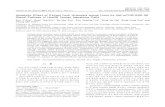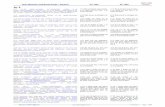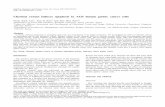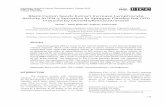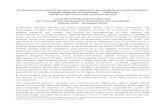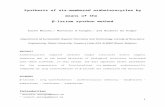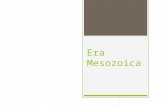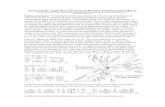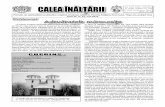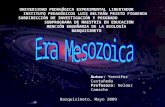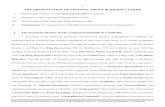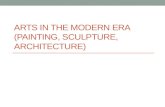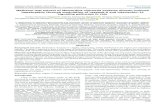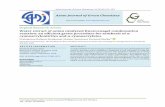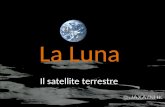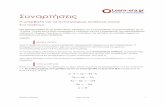Education III Session - ERA International Scientific...
Transcript of Education III Session - ERA International Scientific...

International Scientific Conference eRA-6
Education III Session
1. Climate Change and Ecosystems: A Web-based Hypermedia Teaching Intervention for Primary School Learners
Gkolfo Kaliantzi1, Nikolaos Larios2, Vassilios Μakrakis3
1 Sofokli Venizelou 82, 141 23 Lykovrysi - [email protected] r – PhD Candidate, UNESCO Chair, Department of Primary Education, University of Crete2 Agathiou 30, 114 73 Athens - [email protected] PhD Candidate, UNESCO Chair, Department of Primary Education, University of Crete3 Androutsou 8, 116 73 Voula - [email protected] - Professor, ICT in Education, Department of Primary Education, University of Crete - UNESCO ICT in ESD Chairholder
AbstractThis paper deals with the integration of climate change across the Greek primary school curriculum through a web-based hypermedia application entitled: «Climate change and ecosystems», which is a part of a broader web-based hypermedia environment entitled: «ICT-enabled integration of climate change education for sustainable development across the Greek primary school curriculum». The web-based environment includes interactive activities and supportive material on climate change and is open to all the six grades at the primary school level. The methodological approach used merges ICT, ESD, critical pedagogy and Climate Change Education principles and practices.
Keywords: climate change, ecosystems, curriculum, hypermedia technology.
IntroductionIn recent years, humankind has to face a profound economical, social and ecological crisis that has its roots in the unsustainable ways people treated their environment for years. Sustainable development is generally perceived as an overlapping of four pillars, dimensions or components, namely environment, society, culture and economy (UNESCO, 2008). Climate change is considered to be the most threatening global environmental problem of our time and has many repercussions not only in the environment, but also in economy, culture and society (UNESCO, 2002). Over the past decade, we have seen a significant expansion of ICT (Information and Communications Technologies) in schools, not only across economically developed countries, but also around the world (Makrakis, 2006; Pelgrum & Law, 2003). The link between ICTs and sustainable development is being addressed by extensive debates and research which recognize the challenge new technologies bring to the reorientation of education towards learning to live sustainably (Makrakis, 2006; Makrakis, 2010ac; Makrakis, 2011). Greek education needs curricula that correspond to modern issues regarding ESD (Education for Sustainable Development) and ICT. This paper deals with the integration of climate change in Greek primary school curriculum through a web-based interdisciplinary hypermedia application entitled: «Climate change and ecosystems». This application points out the consequences of climate change and leads children and teachers to reflect and act about it, after having
International Scientific Conference eRA-6 - ISSN-1791-1133 1

International Scientific Conference eRA-6
understood in depth the phenomenon. Climate change is defined as the change in climate caused directly or indirectly by human activities, distinguishing the term from climate variability that has natural causes (United Nations, 1992). The last 100 years, the air temperature on Earth’s surface has risen from 0,30 to 0,60 C. In another 100 years, this temperature is expected to be from 1,40 to 5,80 C, depending on the total amount of greenhouse gases in the atmosphere (Papadimitriou, 2004). This will lead to a dramatic change in Earth’s environment. Extreme weather conditions and will occur frequently and intensively (Rajayal & Gadema, 2007). The ice at the poles will melt, causing huge ecological disasters. Species, habitats and entire ecosystems will disappear, while food webs will break (National Wildlife Federation, 2007). Many coastal areas will be covered with water and cease to exist. Climate change may also bring change in the quantity and quality of raw materials, natural resources, drinking water and clean air. However, climate change is not only an environmental issue, but also an economic and social matter, regarding economic prosperity, food and water supplies, health, human rights and politics. The environmental changes will cause changes in periods of rainfall and thus serious problems in agriculture. National economies will be affected. People’s life style will be downgraded. Many children will not attend school (UN Millennium Campaign, 2008). Contagious diseases will spread due to high temperatures to countries that cannot deal with them (Ainley, 2007). Poor people will have to immigrate. There might be social or military conflicts. Therefore, it is of great importance to acquire right attitudes and behaviors towards climate change issues from an early age.Children and teachers have many misconceptions about climate change (Cordero et al, 2008; Papadimitriou, 2004). While children have some theoretical knowledge about the environment, they rarely engage in actions to protect the environment (Papadimitriou, 2004). ICT-enabled climate change education contributes to extending children’s understanding of the environmental repercussions of climate change and to taking actions towards the environment. The present application is based on authentic learning situations, experiences and problems that may be encountered by students in their daily life, about what may happen to animals, plants, ecosystems, seasons and climate due to climate change. Children face real problems, studying stories, case studies, websites, articles or videos and developing activities in text editor, presentation software, conceptual map or painting tool. Then they reflect, discuss with their classmates and decide to act accordingly.
Theoretical background of the web-based learning environmentThe present web-based hypermedia learning environment and teaching intervention is based on critical pedagogy, critical constructivism and ESD. Critical pedagogy focuses on the important problems of individuals and society. Its main goal is the awakening of critical consciousness in people that will lead them to personal independence, empowerment and social transformation, through the involvement of all in social change. Critical pedagogy contributes to the opening of school in society and enables teachers and students to make decisions about their future and to act to change the world (Raptis & Rapti, 2006). This perspective is close to the emancipatory knowledge interest advanced by Habermas (1972). Habermas specified three knowledge categories: technical, practical and emancipatory. Technical knowledge focuses on explaining phenomena, which in turn demands practical knowledge that involves values clarification and focus on exploring people’s real-life experiences. The third dimension of knowledge allows the learner to develop insight and self-awareness based on knowledge generated both technically and practically,
International Scientific Conference eRA-6 - ISSN-1791-1133 2

International Scientific Conference eRA-6
especially through reflection and reflexivity (Kostoulas-Makrakis & Makrakis, 2006). The emancipatory interest entails a concern for moral and ethical dimensions underlying human action for building a sustainable world by asking what sort of activities and experiences will help lead people towards more sustainable lives characterized by equity, justice and to ensure a better life quality for everyone now and generations to come (Makrakis, 2010b). It might also guide teachers and learners toward recognizing the role that society and schools play in perpetuating unsustainable ways of thinking and actions as well as uncover the social, economic, political and cultural factors that have affected planet’s sustainability (Makrakis, 2011). The emancipatory interest represents a concern with the moral and ethical criteria surrounding sustainable human development action. In this context, curriculum is perceived as praxis, where empowerment and action are highly valued (Grundy, 2003) contrasted to product and process.According to critical constructivism, meaning is formed and knowledge is constructed by children through interaction, conversation and critical reflection that leads to conceptual change. The historical and social context in which knowledge takes place is crucial. Critical constructivism empowers people to take action for social reform (Kostoulas-Makrakis & Makrakis, 2006). The activities developed in this application are based on the principle of critical reflection and inquiry-based learning. Learners are asked to discuss about it among their groups and then take the proper action. Students’ energetic participation takes place through brainstorming enabled by various scaffolds such as concept mapping, debating in forums, solving authentic problems, constructing knowledge and action. Today, schools recognise the importance of educating children to take positive action on social and environmental issues to ensure a better life quality for everyone now and generations to come. In response to this, ESD is becoming increasingly relevant and a growing number of schools are seeking to embed ESD principles in curriculum planning. Our application is also based on the ESD principles (Zaxariou, 2005): The interdisciplinary and the holistic approach The opening of the school to society The emphasis on environment, economy and society The education about, in and for the environment The information, the active participation, the critical thinking, the action and the
collaboration in a decision-making environment Using many educational methods and learning by doing Understanding and acting locally, thinking globally A new citizenship towards the environment
MethodologyICTs are necessary educational tools in every classroom that can help teachers to accomplish their difficult tasks. ICT possibilities go far beyond other educational tools and offer students a new interacting environment in which they will research information and construct knowledge in more pleasant and interactive ways. ICTs offer teaching and learning many advantages if they are used as cognitive tools: Students learn by becoming designers of educational material. This means that
they learn by creating something in order to show it or teach it to others. To accomplish that, they have to work hard and think much. The more they work designing materials (texts, presentations, concept maps, works of art etc), the more they construct their own meaningful realities based to new knowledge (Jonassen, 2010).
International Scientific Conference eRA-6 - ISSN-1791-1133 3

International Scientific Conference eRA-6
Cognitive tools are constructive environments of energetic learning (Jonassen, 2010). Students are no longer passive listeners and teaching becomes student-based.
Visualization tools help students to process the abstract concepts or mental images that they depict, such as the formation of chemical compounds (Jonassen, 2010). Climate change physics is very difficult for students to process (Papadimitriou, 2004), so visualization tools help them to understand it.
Conceptual maps allow users to design visual maps of concepts within squares connected by lines. These maps are representations of ideas in space and the relationships of concepts created by students are stored in memory (Jonassen, 2010).
Learning today has to do with the research and critical process of information. Research has shown that the use of ICT helped children to understand better climate change (Papadimitriou, 2004) and made them more willing from adults to engage in actions to prevent climate change (Lenzen & Murray, 2002).
Technical specifications of the applicationDrupal was chosen as the back-end system of our hypermedia learning environment. Drupal is a free open source CMS (Content Management System) written in PHP (Hypertext PreProcessor) and distributed under the GNU General Public License. Some key advantages offered by CMS solutions are low development time along with high reliability and wide variety of useful tools for educators such forums, wikis, blogs, quizzes, polls, sweepstakes and many other robust social networking modules. The main learning content is composed of Learning Objects (LOs). The authoring tool that was used to create the LOs is Adobe Flash. Each LO is constructed from various media assets, such as text, video, animation, charts and sound narration all gathered under a simple graphic user interface (Schreurs et al, 2009). The combination of Drupal and Flash provides a dynamic and adaptable learning environment. Moreover, the learning environment is enriched through the integration of various ICT tools, such as concept maps (Text2Mindmap), spreadsheets (Zoho Sheet), presentations (280slides), paint tools (Pixlr), word processing (Zoho Writer) and a modern Greek online dictionary. Any supplementary material needed include relative web pages, web articles, case studies, videos, animations, general ideas or advises and help for teachers and students. There is also a glossary including difficult terms. Students search the web and create their own material engaging with the suggested activities and save it through an electronic portfolio. They can also create pages, comments, blogs and forums, send emails and be directly connected with social networks.
Structure of the hypermedia environmentAt first, students choose the application «Climate change and ecosystems». Then, they choose one of the 3 grade levels: A-B (6-7 year olds), C-D (8-9 year olds) and E-ST (10-11 year olds). Every level has several units that students choose to cope with. The application «Climate change and ecosystems» of A-B level includes 10 units: 1) Animals and plants of my area, 2) The ecosystem of my area, 3) Weather and climate, 4) Seasons and months, 5) The Greek ecosystem, 6) Families of animals and plants, 7) The needs of animal and plants, 8) The characteristics of animals and plants, 9) Animal and plant distribution in the area and 10) What animals and plants offer to our lives. Students can choose any of these units to start with and engage to its activities. In these units, children deal with topics, such as what climate change has to do with local plants, animals, ecosystems, weather and seasons. They also cope with what are
International Scientific Conference eRA-6 - ISSN-1791-1133 4

International Scientific Conference eRA-6
the characteristics and needs of animals and plants, how they are distributed in the area, what they offer people, what climate change brings upon them and how children can act in order to protect their environment. Alongside the activities conducted in the classroom, many activities outside the classroom are suggested, referring gradually from the local to national and global level. All units correspond to related Greek curriculum units.
Picture 1: «Weather and climate» unit of «Climate change and Ecosystems»The main work frame of the environment is either the North Pole, where a pair of penguins guide the student through the activities or the Mediterranean ecosystem, where the penguins are replaced by two foxes. Picture 1 shows a snapshot of the screen at the unit «Weather and climate» of the application «Climate change and ecosystems».
Concluding remarksThis paper deals with the integration of climate change in Greek primary school curriculum through a web-based interdisciplinary hypermedia application entitled: «Climate change and ecosystems». The web-based environment developed includes interactive activities and supportive material regarding to information, changing attitudes and actions on climate change and is open to all primary school grades. The methodological approach used is based on critical pedagogy, critical constructivism, ESD and hypermedia technology. The activities are based on authentic learning situations, experiences and problems that may be encountered by students in their daily life, about what may happen to animals, plants, an entire ecosystem, to seasons and climate due to climate change. The main tools used in the activities are conceptual maps, text editors, painting tools and a modern Greek online dictionary. There is integrated material that includes relative web pages, articles, case studies, videos, animations, general ideas or advises to be used as scaffolding tools. There is also a glossary including difficult terms. Students search the web and create their own material engaging with the suggested activities and save it through an electronic portfolio. They can also create pages, comments, blogs and forums, send emails and be directly connected with social networks. To conclude, ICTs are used in this web-based material as cognitive tools and offer students a new interacting environment in which they will research information and construct knowledge about climate change and ecosystems.
References
International Scientific Conference eRA-6 - ISSN-1791-1133 5

International Scientific Conference eRA-6
1. A. Raptis, A. Rapti, Learning and Teaching in the Information Age. Holistic Approach, Athens: 2006.
2. A. Zaxariou, Environmental Education and Curriculum, Athens: Ellin, 2005.3. D. Jonassen, “Computers as mind tools for engaging critical thinking and
representing knowledge”, X-Ray @ Education, vol. A, no. 3, pp. 5-10, March, 2010.
4. E. Cordero, A. Todd, D. Abellera, “Climate Change Education and the Ecological Footprint”, American Meteorological Society, June 2008.
5. J. Habermas, Knowledge and human interests. London: Heinemann, 1972.6. J. Schreurs, R. Dalle, G. Sammour, “Authoring Systems Delivering Reusable
Learning Objects”, Ijet, vol. 4, Special Issue no. 2: “IMCL2009”, pp. 37-42, October 2009.
7. K. Rajayal, Z. Gadema, Climate Change and Disaster Impact Reduction. Northumbria University, School of Applied Sciences, Disaster and Development Centre: 2007.
8. M. Lenzen, J. Murray, “The Role of Equity and Lifestyles in Education about Climate Change: Experiences from a Largescale Teacher Development Program”, Canadian Journal of Environmental Education, vol. 6, Spring 2002.
9. N. Kostoula-Makraki, V. Makrakis, Multiculturalism and Education for a Sustainable Future, Athens (2nd edition): 2006.
10. National Wildlife Federation, Overview of Educator Guidelines for K-12 Global Climate Change Education, National Wildlife Federation: June, 2007.
11. P. Ainley, “Education and Climate Change-some systemic connections”, British Journal of Sociology of Education, vol. 29, pp. 213-223, 2007.
12. S. Grundy, Curriculum: Product or Praxis, Athens: Sabbalas, 2003.13. UN Millennium Campaign, Climate Change and Children, Unite for Children:
Unicef, 2008.14. UNESCO Netherlands National Commission, Culture and sustainable
development: Executive summary. Netherlands National Commission for UNESCO, 2008.
15. UNESCO, Unesco Universal Declaration on Cultural Diversity, Paris: Unesco, 2002.
16. United Nations, Education for Sustainable Development and Climate Change, United Nations Educational, Scientific and Cultural Organization: 1992.
17. V. Makrakis, An instructional design module of ICT that empowers teachers to integrate Education for Sustainable Development across the Curriculum, In C. Angeli & N. Valanides (Eds), Proceedings of the 6th Panhellenic Conference with International Participation on Information and Communication Technologies in Education, vol. 1, pp. 391-398, University of Cyprus, 2008.
18. V. Makrakis, ICT-enabled Education for Sustainable Development: Merging Theory with Praxis. In M. Youssef & S.A. Anwar (Eds.), Proceeding of the 4th
Conference on e- Learning Excellence in the Middle East, pp. 410-419, Hamdan Bin Mohammed e-University (Dubai), UAE, 2011.
19. V. Makrakis, ICT-enabled Reorienting Teacher Education to Address Sustainable Development: A Case Study. Retrieval in Jimogiannis, Th. (Ed.), Proceedings of the 7th Panhellenic Conference ICT in Edication, pp. 1-8, University of Peloponnese, Korinthos, 2010a.
20. V. Makrakis, Preparing United Arab Emirates teachers for building a sustainable society. University of Crete: E-Media publications, 2006.
International Scientific Conference eRA-6 - ISSN-1791-1133 6

International Scientific Conference eRA-6
21. V. Makrakis, Strategies to Reinforce the Role of ICT in Teaching and Learning for Sustainability, in Witthaus, M., Candless, K. and Lambert, R. (Ed.), Tomorrow Today, Tudor Rose on behalf of UNESCO, Leicester, pp.169-171, 2010b.
22. V. Makrakis, The Challenge of WikiQuESD as an Environment for Constructing Knowledge in Teaching and Learning for Sustainable Development, Discourse and Communication for Sustainable Education, vol. 1, no. 1, pp. 50-57, 2010c.
23. V. Papadimitriou, “Prospective Primary Teachers’ Understanding of Climate Change, Greenhouse Effect and Ozon Layer Depletion”, Journal of Science Education and Technology, vol. 13, no. 2, pp. 299-307, June 2004.
24. W. J. Pelgrum & N. Law, ICT in Education around the World: Trends, Problems and Prospects. UNESCO: International Institute for Educational Planning. Paris, 2003.
International Scientific Conference eRA-6 - ISSN-1791-1133 7

International Scientific Conference eRA-6
2. Social Network sites: The case of FacebookTM In education
Olga Kalantzi1, Dimitrios Tsiotas2*
1 MSc Attorney at law, ASPETE postgraduate, email: [email protected] PhD Candidate in Urban and Regional Planning, University of Thessaly, email: [email protected], [email protected] *corresponding author
Abstract(Words: 118)Social Network Sites (SNS) consist today the fundamental form of digital social networking, so as to suggest a primal environment of human socialization, whose significance is placed next to the traditional institutions of family and education. SNS suggest a global receptor of social activity, which activate and cultivate their users, based on individualized approach.The present study conducts a review of the modern Web Social Networks and Social Network Sites, focusing on the case of FacebookTM. The main purpose of the study is to investigate the Social Networks’ contribution to didactics, to secondary education students’ knowledge and also to recognize the impact to students’ learning ability and motivation, by examining the potentials of the educational utilization of the Social Networks. Key words: social network sites, education, didactics, educational technology
Introduction
Social networks are defined as social structures, consisting of interacting entities and their relationships (Htouris, 2004) and described by the concepts of “communication”, “social identity” (Htouris, 2004), “connectivity” (size and density), “homogeneity” (frequency of contact among members) (Berkman and Glass, 2000) and “social support” (emotional, psychological or financial support for the social network’s members) (Walker et al., 1997). As social systems, social networks acquire educational utility, from the one hand to the extent that an individual’s socialization regards the acts of learning and adapting to a system, described by social norms and requirements, and on the other hand, due to their global spread, which has established them as a modern communication need and placed their significance next to the traditional institutions of family, education and tradition.The Web, considered as the greatest social and technological system in recent history, lend to the traditional social networking culture a new digital aspect. Bandura’s Social Learning Theory suggests a good reference point for understanding the impact of online social networks in education. According to this theory, three factors potentially affect social learning: “the individualistic teaching”, the each time “social exemplars” (leadership forms, which emerge in the social groups that the students belong) and the “learning environment”. Alavi added in 1994 as distinct attributes of effective e-learning, the concepts of “active engagement” of individuals in knowledge construction, of “interpersonal interactions” in cooperation and of “problem solving situations”. The growing research field in this scientific sector has shown that a social network is a central element in the “cooperative” learning environment. In social networks, learning suggests a result of collective acts, achieved through uncensored communication, through the application of common practices and social connections networks. Consequently, knowledge regards a collective construction rather than a static object. Social networks suggest an important communication bus for
International Scientific Conference eRA-6 - ISSN-1791-1133 8

International Scientific Conference eRA-6
exchanging resources, material and knowledge and synthesize also an environment of social support and socialization for new entrants (Cho et al., 2007).The growing diversity of student activities and obligations, so as their related needs, the necessity of education to upgrade to more flexible teaching and learning forms and to acquire more applied projections in everyday life, lend nowadays educational utility to the Web (Collins, 1998), which is worldwide documented by numerous studies, regarding the didactic utilization of Web in the educational process (DeWitt, 1997, Allen, 1998, Collins, 1998, Mann, 1998, Bork, 2000, Pryor, 2002, Purvis, 2005, Grosseck, 2009). It is resulted, by a research of Tzimopoulos et al. (2010), that a major proportion of pupils in early secondary education have frequent access to the Internet, both for communication and entertainment, as also for information purposes and for preparation of school tasks and lessons.
Social Network Sites (SNS)
The SNS suggest the modern aspect of the social networks in Web. SNS are considered as “Web services which enable individuals to: (1) construct a public or semi-public profile within a defined system, (2) articulate a list of other users to share a connection with and (3) have their picture and to offer the ability to other profile users to traverse the list of their connections”. The SNS’s main purpose can be detected within the concepts of “socialization” (or “networking”) and “social browsing” (Thelwall, 2009). Recent researches focus on the exponential growth of SNS and on the increasing social networking’s in teaching and learning (Glezos et al., 2010), as the Web 2.0 technology services allow the creation of interactive and participatory remote applications, which develop possibilities of human cooperation without involving interpersonal contact.In the EU the 41% of Web users are socially networked to SNS. Worldwide, it has been noted that a proportion of 2/3 of people under 24 years old are members of social networking groups, while the 1/4 of European users have included in their lives activities and time, spent on social networking websites and blogs (Dodontsi et al., 2010). The most frequent use of SNS is world widely observed, on a per capita basis (source, http://www.internetworldstats.com/stats.htm), in North America (37%) and Europe (16%). In U.S.A, the 50% of teens have personal accounts on SNS (Thelwall, 2009), while in Greece, according to a survey conducted by Tzimopoulos et al. (2010), the 43.16% of school pupils and the 50% of high school students use the Web daily, while the student participation in social networks is also high. According to a survey of Lambropoulou and Koleides (2010), regarding the investigation of SNS use by Junior High School students, the 85% of the students visit SNS, while the 69% own a profile.Most popular SNSAccording to the number of active users, the most popular SNS are summarized as follows: (1) FacebookTM, offers the basic features of an SNS and is not particularly focused on any additional services, providing a simple and effective platform for online socialization with friends emphasizing on direct contact. (2) MySpaceTM, allows members to freely customize the appearance of their profile. Additionally, each profile has an integrated music player, emphasizing in this way personal expression through production (or creation) of the profile content (3) YouTubeTM is primarily a hosting base of video data, but also shows additional properties of social networks, fact that contributes more to strengthen the browsing attitude rather than
International Scientific Conference eRA-6 - ISSN-1791-1133 9

International Scientific Conference eRA-6
social friendship. Nevertheless, there are definitely users who adopt both purposes (Thelwall, 2009).
The case of FACEBOOKTM in education
The FacebookTM SNS offers the basic features that web sites of this category provide, without focusing particular on additional services (such as music). It seems that it owes its popularity to the simplicity and efficiency in online socializing with friends (Thelwall, 2009). It also provides a personalized user’s profile, allowing communication, information sharing, creation of friends’ directory and photo albums, establishment and participation to social groups and to a set of web games. It has also attracted the interest of researchers on different topics, such as creating models that describe the activities of users, when they are online or offline, studying the identities of connected users and the technological capabilities of social connections and cultural norms (Mazman and Usluel, 2010). A study of incentives for the use of FacebookTM concluded to seven different types of incentives, by using the mathematical method of “factor analysis” over a sample of 137 members. The principal motivation for this use appeared to be the social connection, concerning the desire to connect and communicate with others. The other factors refer to the exchange of cultural information and ideas (as regards the participation in teams or events), of photos (comment, posting, labeling), of content (applications, quizzes, games), of the social research conduction (what people watch, what and where they find it, where they meet new people), of browsing in social networks (browse profiles of non friends) and of the updating of statements (observation or information). The mentioned research confirms the importance of the purely social aspects of FacebookTM and outlines its flexibility adequacy. It is noteworthy that all the previous factors could be described as motivations for social “grooming”, because even the games can have a social dimension (Thelwall, 2009). The potentials of the educational exploitation of Facebook TM The phenomenal popularity of FacebookTM and of SNS, in general, seems sufficient to support the educational communication and cooperation among students with their relevant institutions (Roblyer et al., 2010). A study conducted at the University of Malaysia (Kabilan et al., 2010) revealed that students are possessed by a strong belief that FacebookTM can suggest a useful learning environment for the teaching of the English language. However, in order this SNS to operate in such a way, foreign languages teachers and trainers should integrate FacebookTM in the educational context, in the course planning and in the educational purpose definition, fact which suggests a subject of further educational research.Roblyer et al. (2010) guided their research into the willingness that the academic community presented in integrating the use of FacebookTM, as a tool in everyday’s educational practice. The results revealed that students become more receptive than the teachers in the use of FacebookTM, both as an auxiliary tool for communication, between teacher and student, so as a supporting tool for the educational process. Teachers seemed more attached to the use of classical techniques of online communication, such as email.Mazman and Usluel (2010) attempted to quantify the educational use of FacebookTM, by using a mathematical model, which indicated that FacebookTM is regarded as an educational tool, due to specific attributes, such as the “feedback” potential, the property of facile “social adaptation” and the available “interactive tools”. Therefore, it can easily be inferred that SNS may be a useful educational tool, especially as far as
International Scientific Conference eRA-6 - ISSN-1791-1133 10

International Scientific Conference eRA-6
it concerns self-acting and collaboration. In related studies (Ajjan and Hartshorne, 2008; Lockyer and Patterson, 2008) it is argued that FacebookTM and other digital social networks facilitate informal learning, because they play an active role in the daily lives of their users. SNS support the collaborative learning, familiarize people with critical thinking and enhance communication and writing skills, through the activation of members to work in personalized environments.Additionally, it is argued that social networks can suggest pedagogical tools, because people can use them for social connectivity and support achievement, for collaborative data mining, for creation, knowledge and information management and for information collection and modification. The educational utility of FacebookTM is composed by processes, such as the provision of intentional or spontaneous learning opportunities to users (through people’s concentration around common interests) the information exchange, the ideas distribution, the public or restricted debate on issues, etc. Specifically, educational communication is encouraged by FacebookTM, through the facilitation of communication between students and teachers (by serving the after course field discussions), the task delivery and assignments or the dialogue, regarding the educational material inquiry. In the collaborative aspect, because of the fact that FacebookTM contains heterogeneous users from different social groups, it provides an opportunity to its members to exchange views and information, leading to the promotion of collaborative learning.The educational use of FacebookTM, regarding collaborative learning, emerges through activities such as setting up groups associated with schools, with departments or its categories, and as the completion of the (after-course) group’s work, by the distribution of tasks, operations, programs, ideas, etc (Mazman and Usluel, 2010). In a study, involving 50 undergraduates at the University of South Africa, it was elected that students used FacebookTM for finding answers to questions relevant to the lectures context (through their internet friends) and for sharing, by this way, information and ideas for programs, lecture notes and discussion topics. This deal helped the lecturer to prepare topics that students are interested and so the process of learning was accelerating. A teacher used FacebookTM to communicate and transmit important information to students, because it was easier and faster than to find them in the school. Another lecturer felt that in this way, students expressed more freely their queries (Hew, 2011).Potential risks in Facebook TM ’s educational utilization Nowadays many researchers recognize that a change takes place in modern youth, which is characterized as “digital generation” or “Homo Zappiens”. These ratings, if any exaggeration is excluded, refer to the ability, displayed by the young, to access and manage multiple channels of information simultaneously (multitasking) (Kirschner and Karpinski, 2010). On the other hand, there are many scientific studies with empirical evidence that present the negative effects of the effort to undergo simultaneous processing of different information channels. These studies show that this kind of information treatment leads to an increase in the time spend for study and to an augmentation of the number of actual errors, in comparison with the sequential (or serial) processing of the same amount of data.In a study of Kirschner and Karpinski (2010), concerning the parallel use of FacebookTM during other studying activities and its relation assessment to the pupils’ school performance (measured in annual average of courses in a classroom and hours spent for studying per week by students), it was found that users of FacebookTM get lower grades and spent less hours per week for study than non-users. According to
International Scientific Conference eRA-6 - ISSN-1791-1133 11

International Scientific Conference eRA-6
Hew (2011) the average time spent by a student in secondary education in FacebookTM
ranges from 10 to 60 minutes daily.Zhong et al. (2011) in a survey, conducted on the relation of SNS, such as FacebookTM
with the “Need for Cognition” (NFC) and the familiarity with “Information and Communication Technologies” (ICT), concluded that the use of such SNS showed a negative correlation with the NFC and a positive with the potential for innovative ICT. Specifically, individuals, who had greater ability to abstract and conceptual thinking, used SNS less frequently, while those who showed an increased tendency for innovative ICT used SNS websites more often. Meanwhile, those who spent more in SNS were more likely to be “multitaskers”. The same study found that people, who spent more time in SNS, were also spend more time using the Web (in general) and much more time using it for work and browsing the Web without a specific purpose, known as “surfing” (Zhong et al., 2011).Hew (2011) also concludes, relying on related studies, that: (1) FacebookTM appears to have little significance in educational use (2) students use FacebookTM to communicate and keep in touch, mainly with known individuals and (3) students in the use of powerful FacebookTM appear vulnerable and tend to disclose more personal information, becoming potential victims of violations of their personal privacy. It is noteworthy that only an amount of 4% of the total 68.169 post messages on the “wall” of FacebookTM had educational themes, namely about 2.700 posts. Also, it was not possible to identify any significant difference between the educational activity of the FacebookTM and the gender, the school year or the scores of students, as it exists in the natural social context of education.Other figures, which strengthen the position of non-significant contribution of FacebookTM for educational use, may be cited as: (1) the average number of citations on education was 0,4 per day (in absolute numbers) (2) The search for help, regarding homework accounted, for an 2,17% of subjects (3) only an 10% of students used FacebookTM to discuss school and educational issues (eg. for iterations, group work management) and (4) the majority of students (that even in varied surveys consistently exceeds an 85%) had never contacted to their teaching staff using FacebookTM (Hew, 2011).
Conclusions and recommendations
The foregoing brief review on the educational use of SNS, of the type of FacebookTM, indicated that initially the SNS may contribute to the socialization of students, to the economic treatment of the course delivery time, to strengthen the constructive and individualistic learning, adapting them to requirements, skills and abilities of each student, to encouraging self-activity, to providing incentives to search for sources, to reinforcing to develop communication and collaboration. The educational, however, use of FacebookTM, despite its dynamics, seems trivial, in the extend that FacebookTM
cannot be considered as an essential educational tool, since this (an those of similar type) site was originally designed to provide basic social networking services. The educational use of FacebookTM can be oriented in three recommended thematic axes.The first axis concerns the encouragement of students to integrate educational topics and pedagogic activities in the time already spent for browsing FacebookTM and similar SNS. This can be achieved: (1) by assigning small tasks or questions in more than four-member groups, in order to promote teamwork activities, which can be conducted easily through FacebookTM and other SNS for dense student groups (as long as it is difficult such to be conducted through physical meetings), (2) in terms of
International Scientific Conference eRA-6 - ISSN-1791-1133 12

International Scientific Conference eRA-6
open questions in class, which involve the exchange of views and ideas through a SNS (3) by substituting the classical use of e-mail for communication and distribution of educational material (4) with the assignment of training exercises that practice the “multitasking” to students.The second axis concerns the linguistic contribution of the FacebookTM to the educational process of English learning. This SNS has been established as a useful tool for international communication. The introduction (initially in experimental level) of FacebookTM student communities (considered as a type of Web “Erasmus”) that consist of transnational participation, with designated educational project, may be a particularly productive educational project, with advantages both on practicing the English language as to familiarize with general research methods.The third axis refers to a set of acts, regarding the teachers and instructors aspect, which are essential for exploiting the students’ pre-formed knowledge of the FacebookTM usage (consisting of the amount of lived experience, the vocabular code, the cognitive and the perceptual patterns that students use to communicate through SNS), in order to consist paradigms for the comprehension of the official educational context. The study of Tsiotas and Vafopoulos (2010) suggests a characteristic attempt on this topic, which deals with the mathematical concepts that can be taught, by using examples from FacebookTM and generally from the Web.Conclusively, the use of the online interactive capabilities that the introduction of Web 2.0 and the widespread SNS technologies provided may be an effective supplemental teaching tool, which can render incentives of social, collaborative, participatory activation for the users, under the condition of a targeted, profound and planned utilization of the individual capabilities and benefits that SNS can present.
References1. Ajjan, H., Hartshorne, R. (2008) “Investigating faculty decisions to adopt Web
2.0 technologies: theory and empirical tests”, The Internet and Higher Education, 11(2), pp.71-80.
2. Allen, R., (1998) “The Web: Interactive and multimedia education”, Computer Networks and ISDN Systems, 30, pp.1717-1727.
3. Berkman, F., Glass, T., (2000) “Social integration, social networks, social support, and health”, In Berkman and Kawachi (eds.) (2000), Social Epidemiology, Oxford, Oxford University Press, pp.137-173.
4. Bork, A., (2000) “To use or not to use Web 2.0 in higher education?”, Procedia Social and Behavioral Sciences, 1, pp.478-482.
5. Cho, H., Gay, G., Davidson, B., Ingraffea, A., (2007) “Social networks, communication styles, and learning performance in a CSCL community”, Computers and Education, 49, pp.309-329.
6. Collins, B., (1998) “New didactics for university instruction: why and how”, Computers and Education, 31, pp.373-393.
7. DeWitt, S., (1997) “Out there on the Web: Pedagogy and Identity in Face of Opposition”, Computers and Composition, 14, pp.229-243.
8.Dodontsi, M., Dodontsi, I., Dodontsis, M., (2010) “Digital Gap”, Procceidings of 2nd Pan-Hellenic Educational Conference of Imathias, pp.1851–1874.
9.Glezou, K., Grigoriadou, M., Konstantinou, N., (2010) “Utilization of online social networking service in the Greek education”, proceedings of the 5 th Pan-Hellenic Conference in Didactics of Informatics, Athens, pp.375–384.
10.Grosseck, G., (2009) “Learning with the World Wide Web”, The Internet and Higher Education, 2 (2-3), pp.81-85.
International Scientific Conference eRA-6 - ISSN-1791-1133 13

International Scientific Conference eRA-6
11.Hew, K., (2011) “Students’ and teachers’ use of Facebook?”, Computers in Human Behavior, 27, pp.662–676.
12.Htouris, S., (2004) Reasonable Symbolic Networks, Athens, Nesus Publications.
13.Kabilan, M., Ahmad, N., Abidin, M., (2010) “Facebook: An online environment for learning of English in institutions of higher education?”. Internet and Higher Education, 13, pp.179-187.
14.Kirschner, P., Karpinski, A., (2010) “Facebook and academic performance”, Computers in Human Behavior, 26, pp.1237-1245.
15.Lambropoulou, T., Koleides, M., (2010) “The usage of Social Network Sites from Junior High School students”, Proceedings of the 2nd Pan-Hellenic Educational Εκπαιδευτικού Conference of Imathias, pp.1688–1696.
16.Lockyer, L., Patterson, J. (2008) “Integrating social networking technologies in education: a case study of a formal learning environment”, Proceedings of 8th IEEE International Conference on Advanced Learning Technologies (pp. 529e533), Santander, Spain.
17.Mann, J., (1998) “Teaching on the Web”, Computers and Geosciences, 24 (7), pp.693-697.
18.Mazman, S., Usluel, Y., (2010) “Modeling educational usage of Facebook”, Computers and Education, 55, pp.444-453.
19.Prior, B., (2002) “147 practical tips for teaching online groups: essentials of web-based education”, Internet and Higher Education, 5, pp.283–291.
20.Purvis, G., (2005) “New Web, new teaching and farewell”, The Advanced Semiconductor Magazine, 18 (8), p.2.
21.Roblyer, M., McDaniel, M., Webb, M., Herman, J., Witty, J., (2010), “Findings on Facebook in higher education: A comparison of college faculty and student uses and perceptions of social networking sites”, Internet and Higher Education, 13, pp.134-140.
22.Thelwall, M., (2009), “Social Network Sites: Users and Uses”, Advances in Computers, 76, pp.19-73.
23.Tsiotas, D., Vafopoulos, M., (2010) “Mathematic Significances as Didactic Transformations of the Web Science”, presented at the International Scientific Conference eRA–5, The SynEnergy Forum, 15-18 September 2010, Piraeus, Greece.
24.Tzimopoulos, N., Porpoda, A., Provelegios, P., (2010) “Safe use of the Internet”, Proceedings of the 2nd Pan-Hellenic Educational Εκπαιδευτικού Conference of Imathias, pp.1723–1730.
25. [Walker, K., Macbride, A., Vachon, M., (1997) “Social support networks and the crisis of bereavement”, Social Science and Medicine, 11, pp.34-41.
26.Zhong, B., Hardin, M., Sun, T., (2011) “Less effortful thinking leads to more social networking? The associations between the use of Social Network Sites and personality traits”, Computers in Human Behavior, 27, pp.1265–1271.
International Scientific Conference eRA-6 - ISSN-1791-1133 14

International Scientific Conference eRA-6
3. Using animation technology in producing educational dvds based on fine arts and music
Dr George Bikos¹, Magda Roussi, M.A.², Evie (Evangelia) Tsoutsoura³ ¹ Dpt. of Librarianship and Information Systems, Technological Educational Institute, Egaleo of Athens, GreeceTel: 6979345166 Fax: 2104511522 E-mail: [email protected]² Researcher, Fine Artist & Designer, Piraeus, Greece (ex Director of Fine Arts Group - University of Piraeus)Tel: 2104132019 Fax: 2104136638 E-mail: [email protected]³ Teacher of English, General & Business, specialized in adults's training, Kallithea of Athens, GreeceTel: 2114000507 6973081267 E-mail: [email protected]
Introduction
Two are the main directions on which the Greek Ministry of Education is trying to guide the teaching system of the primary and secondary level of education over the last years: The new technologies –that is Computer and Communication Technologies (ICT)– and interdisciplinary. ICT on the one hand is a technological structure which can support a specific but wide total of teaching methods, as much as being a teaching mean itself. While interdisciplinary approach of knowledge on the other hand concerns a rather general way of teaching which is also a kind and teaching method. In general though, interdisciplinary is a way to realize and analyze reality1.For the past few months however the Ministry of Education through the Pedagogical Institute which is supervised by the Ministry is promoting a really new and innovative for the Greek reality and not only, project which is about a new orientation that the Greek school teaching practices need to get. We refer to the project titled “Arts in education” –one of its contributors is George Bikos– which is about the worthy use of almost all kinds of arts as teaching methods in order for all subjects – e.g. language, physics, geography, math- in all levels of primary and secondary education to be taught in a more effective, more productive and more pleasant way. More specifically it is about a project that urges teachers of all specialties to teach some of their lessons by presenting among others in class some art works coming from all kinds of art2. As you may realize therefore, arts are becoming part of every level of school training in the most serious way, not only as knowledge need to be taught but also as a new teaching mean. (We note that the meaning of the teaching mean is way above in quality and richer in content than the meaning of teaching material.)
1 For the content of interdisciplinary teaching see http://en.wikipedia.org/wiki/Interdisciplinary_teaching2 See relevant webpage including all material to be given to the teachers of all specialties being trained in this project, thus in learning how to use different artwork into their daily teaching as teaching means: http://www.epimorfosi.edu.gr/index.php?option=com_content&view=article&id=97:2011-05-23-08-52-54&catid=52:2011-05-20-07-42-11&Itemid=67 (pp.99-102) and http://www.epimorfosi.edu.gr/images/stories/ebook-epimorfotes/texnes/9.TEXNES.pdf (pp.189-194). George Bikos is one of the writers of this training material which is been uploaded on this page and has been shared with teachers of primary and secondary level of education.
International Scientific Conference eRA-6 - ISSN-1791-1133 15

International Scientific Conference eRA-6
Main Body
A year and a half ago, I, Magda Roussi and George Bikos decided to combine the arts we serve –he the music and I fine arts– to create an educational work/project about a very popular topic over the last decades, which has been a concern of the Greek School as well: the environment – and mostly man’s relation to it. With the precious aid of some friends and mainly Eleni Giannopoulou’s help who was the one to give “motion” to my fine arts work craft via 2D animation technique and also with the help of the University of Thraki and the TEI of Ionion Nisson that took on the cost of production, we created a dvd, parts of which we are presenting shortly. Therefore, as it can easily be understood from all mentioned so far this work expresses completely the philosophy and the logic of the Ministry’s before mentioned project, despite that a. we couldn’t possibly know the Ministry’s plans and b. there hasn’t been any communication with the people responsible for the use of our dvd, even though we already know that it has been used (with our consent) by the Environmental Training Centers all around the country and also by other organizations related to secondary level of education. Our aim is firstly to introduce students to the concept of the relation between man and nature as presented through narration, pictures and music throughout its evolution from the pre-historic times until today. Secondly, to make children realize that no human activity is possible without being related somehow to the environment. Note, though, that the word environment as used in the dvd has got a wider meaning than the usual one as we have included even men’s works (e.g. buildings and artistic public creations), as well as the social groups themselves as essences being parts of the social space each person lives in. And we’ve done that, so that to give to the students a better view on how close and vital is man’s relation to the environment. Therefore men’s relation to it is nothing more than a timeless and beyond history necessity, – because when something is met in all historic periods of the human course it is after all for ever.Finally, the third target of our work is to make students – without making it obvious and obligatory - more sensitive towards the environment. The entire dvd is clearly interdisciplinary, not only in relation to the arts’ materials being used –as there is material from more than one art– but also to its content which includes elements/clues that are not part of only one kind of science or one aspect on how we comprehend reality and the world. Let us see some further important features that this dvd has got as a teaching mean. To begin with, it offers its educational content in an attractive way as it uses the arts’ language which by definition is for all people more approachable and more pleasant when communicating – especially in comparison to other teaching or school manners/ways of presenting knowledge to any student. Therefore, from a pedagogical point of view it offers a clear advantage to teachers who’ll use it, since it has got the ability to secure the students’ attention and interest to watch all mentioned in it during its 10 minute-presentation and afterwards to focus on everything it sends out to its viewers.Its way to communicate with the audience/viewers is very familiar to the students exactly because the language and the code used is extremely similar to the one of the TV which children watch so much and also similar to the code and language used in computer games. Thus we can say that it is itself a teaching mean and material that uses the audiovisual language children are very familiar with.
International Scientific Conference eRA-6 - ISSN-1791-1133 16

International Scientific Conference eRA-6
As a multi-art project that it is, it is also characterized by something very important from a point of view of teaching value, usefulness, benefit and operation, as it connects to the education’s character school training should have: it offers unconsciously to the children a, esthetic cultivation through which it becomes a small part of the esthetic taste and judgment the students grow. And we refer to the criteria that will allow them in the future to evaluate the esthetic form and content of any communicative message they receive in a way that bases on a minimum of quality demands. Finally, if there is interest from the children, if there is adequate teaching time and mainly if the teacher has got the knowledge and the necessary will/mood, there is one more teaching content which can be presented to the students based on this dvd and that is the paralleling/comparison of the dvd’s music with the images accompanying it and in general with the meanings and the thoughts that music expresses or accompanies!It is an analysis that which if made it will introduce students into something very important: into decoding, performing and explaining the music background used in every kind of visual narrative – either that is a computer game, or a film or a tv show (even the tv news that use music as background while reporting)! And such a presentation is very important for the students, firstly because this kind of analysis has got great value and depth from the communication studies point of view – especially when communications dominate nowadays but are still not offered in Greek schools. And secondly, because such an analysis cultivates a more esthetic and creative imagination into students through combinations such the one of music and moving pictures or arts and something more: the deeper knowledge of the language used in each of the combined arts. Since therefore the Greek School has never offered adequate training and education in arts, the already mentioned Ministry’s program “Arts in Education” should be a great opportunity to make up for the lost time.Closing our presentation we’d like to wish that more artists, teachers and designers of digital training material will follow our example and will offer products of the same –if not better- worthiness and value to the educational community on more topics and teaching contents!
References
1. http://en.wikipedia.org/wiki/Interdisciplinary_teaching [accessed: 15-8-11]2. http://www.epimorfosi.edu.gr/index.php?
option=com_content&view=article&id=97:2011-05-23-08-52-54&catid=52:2011-05-20-07-42-11&Itemid=67 (pp.99-102) [accessed: 15-8-11]
3. http://www.epimorfosi.edu.gr/images/stories/ebook-epimorfotes/texnes/ 9.TEXNES.pdf (pp.189-194) [accessed: 15-8-11]
International Scientific Conference eRA-6 - ISSN-1791-1133 17

International Scientific Conference eRA-6
4. Design and Development of Accessible Educational and Teaching Aids for Students with Disability
K. Arampatzi1, K. Girtis2, M. Hatzopoulou3, V. Kourbetis4, E. Zografou5
1PhD Philosophy, Greek Language Teacher2PhD Informatics, Mathematics Teacher3Special Education Counsellor,4PhD Special Education for the Deaf,5MSc International & European Studies, English Language TeacherHellenic Pedagogical Institute3
Special Education DepartmentMessogeion 392, 15341 Aghia Paraskevi{arabatz, kgirtis, kourbeti, mhatz, ezogr}@pi-schools.gr
AbstractInequalities in education for students with disabilities are widespread throughout the whole education system. However, ensuring equal opportunities and encouraging equal access to knowledge for all students is considered the basic and non-negotiable principle in any democratic society, in order for the education system to play a significant role in mitigating social inequalities. School education must create the conditions which will enable each and every student to comprehend the role of ICT, to use and exploit, as well as to constantly improve his/her ability to have access to ICT efficiently. The aim of the paper is to present the methodology and the standards for adaptation of the textbooks for the 1st and 2nd grade of primary school level so that to be fully accessible by students with disabilities, as these were recommended by the Special Education Department of the Hellenic Pedagogical Institute (newly established as “Institute of Educational Policy”).Key Words: special education, accessibility, universal design
Introduction
The rapid increase of students with different and diverse educational needs in mainstream schooling is a reality with multiple costs requiring new educational practices. Universal Design for Learning (“Universal Design” or “Design for All”) foregrounds educational practices by creating diverse educational environments, tools, educational materials and support services. The “Universal Design in education” can be regarded as an extension of the Universal Design in architecture, as expressed by Ron Mace, where the structures are the result of ideas, design and construction serving the maximum number of users, including disabled people, without any modifications or specialised design ([11], [9]). The basic prerequisite of the “Universal Design in education” is to identify and eliminate barriers in class (both general and special class), as well as in the curriculum, the teaching materials and methods and the educational software. Universal Design involves presenting information in multiple forms, using alternative pathways and means towards acquisition of knowledge and participation, but also changing goals and objectives, individualised teaching and measurable effectiveness. It is important products and services to be designed for potential and necessary adaptations, when required, in order to meet the individual user needs ([2], [8]).3 Newly established as “Institute of Educational Policy”
International Scientific Conference eRA-6 - ISSN-1791-1133 18

International Scientific Conference eRA-6
Inequalities in education for students with disabilities are widespread throughout the whole education system in Greece. However, ensuring equal opportunities and encouraging equal access to knowledge for all students is considered the basic and non-negotiable principle in any democratic society, in order for the education system to play a significant role in mitigating social inequalities. Given the rapid development of technology and its increasing exploitation for individual or professional use, school education must create the conditions which will enable each and every student to comprehend the role of ICT, to use and exploit, as well as to constantly improve his/her ability to have access to ICT efficiently. The growing amount of knowledge and information, despite its provided opportunities and the progress that undoubtedly represents, involves the risk of widening social inequalities and creating a diversity gap. Therefore, ensuring access for all to information and knowledge requires the need for providing equal opportunities in learning and assessment. Furthermore, the constant discoveries and innovations in various fields of science and technology lead to constant revision of knowledge thus press both individuals and communities to adopt lifelong learning practices.
The project
The project’s aim is to present the methodology and the standards for adapting textbooks of all curricular subjects concerning the first two grades of primary school level, so that to be fully accessible by students with different types of disability (in terms of the Action, “Design and Development of Accessible Educational and Instructional Materials for Students with Disabilities - Horizontal Action” under the Operational Program “EDUCATION AND LIFELONG LEARNING 2007-2013").First, we describe the need to develop educational material both in printed and digital form - depending on the type of disability and the special educational need - the use of suitable digital technology which will make it fully accessible, as well as the requirements for the special software provision (platform/platforms) to be used for adaptation and integration of the educational content in digital environments accessible to students with specific disabilities.In addition, we present the development of special educational material designed to properly prepare students with disabilities for school enrolling.The special learning needs covered through the development of the specific educational material are those of students with:
Visual Impairment Hearing Impairment Physical (motor) disability Mild mental disability Autism Attention deficit disorder (ADD)
We present arguments for the need to inform educational staff, teachers and general stakeholders (parents, students, etc.) on the feasibility and benefits of developing such educational material, in order to raise awareness and urge them to engage in implementation mechanisms and exploitation procedures, as well as to participate in the forthcoming teacher training.Finally, we discuss the need to ensure the project sustainability and to effectively disseminate the experience gained; we also describe the training model the School Counselors and Headmasters of special education, as well as the special education
International Scientific Conference eRA-6 - ISSN-1791-1133 19

International Scientific Conference eRA-6
professionals. The evaluation concerns qualitative and quantitative assessment of results so that the gained expertise and experience to be exploited for future textbooks’ adaptation concerning additional school level grades.
Accessible educational material
The current National Curriculum has defined the requirements for the creation of the necessary supportive teaching material, which has to ensure the access of students with disabilities and special educational needs. The educational material produced within the Project is noted for its accessibility, so that to be suitable for students with special educational needs ([1], [13]).Students with visual impairment need textbooks in Braille Code, recorded material, as well as enlarged material or relief, three-dimensional material etc. The development of material for students with visual impairment requires computers with specialised software, as well as development processes for the conversion, structure and testing of the material. Note that, in the process of proper interface between people with visual impairment and the educational material, the two-fold communication “text-to-speech/speech-to-text” (T2S/S2T) will be included.Teaching material will also be provided to blind or visually impaired students (such as relief drawings for the subject of “Social Studies”, maps, figures, watches, magnifying glasses, etc.). We will develop special educational material for the teaching of Greek in Braille and the Nemeth Code, as well as for the improvement and strengthening motor and orientation skills (development of readiness activities, pre-reading tasks, the Braille teaching method and the method of Orientation and Mobility skills for the Blind and the partially–sighted students with gradual vision loss). We will also search and buy specific software (platform/platforms) that allows students with visual impairment, as well as students with hearing and physical disability to have access to adapted digital content. Furthermore, digital teaching materials, selected by the Special Education Department of the Pedagogical Institute, will be adapted and integrated.Similarly, students with hearing impairment need suitable material using Greek Sign Language, material for bilingual education as well as interpretation services ([10]). The development of material for the deaf requires computers with video recording, specialised software as well as development processes for the conversion into Greek Sign Language, sign interpretation, structure and testing of the material ([6], [7]).For the deaf and hard of hearing students, we will develop accessible digital learning material for the curricular subjects of the first two grades of primary school level, namely Maths, Language, Social Studies and the Literature. Also, we plan to develop specific educational material for Greek Sign Language learning (A’ and B’ grade) as well as teaching material for language readiness. Students with mild mental disabilities need textbooks transcribed with the Method “Easy-to-Read” ([4], [12]) and read aloud by a native speaker ([5]). Students with physical (motor) disabilities need textbooks accessible through "one movement” which will be achieved by simple text scanning and touch-screen reader. Therefore, the existing educational material for both A’ and B’ grades will become accessible by students with physical (motor) disabilities, as such, without any modifications. Students with autism, apart from the general and adapted accessible material, need alternative educational material and adapted visual textbooks’ layout which do not
International Scientific Conference eRA-6 - ISSN-1791-1133 20

International Scientific Conference eRA-6
include much information on each page, having though clear visual instructions. The alternative communicative ways contribute to the development of language skills for children and adults with communication disorders. They are also used as introduction to the learning process of reading and writing and for the communicative process in general. Note that, in the process of appropriate software development for students in the autism spectrum, expanded technical and educational approaches will also be taken into account, such as the Makaton, the Applied Behavior Analysis etc, which will be adapted to the autism spectrum. The adaptability of the educational material to the characteristics of the autistic child is a prerequisite in any kind of implementation. For students with autism, selected texts of the Literature textbook for grades A’ and B’ will be adapted.
Conclusion
The accessible educational material presented above provides flexible methods of presentation in order to give students with diverse learning styles multiple ways of acquiring the information and knowledge included in the national curriculum. It is a rather innovative concept at national level designed on a “pilot” basis; therefore, it is subject to validation process and is open to critical discussion and feedback among all interested parties in order to decide how methods will be further improved and implemented in the best possible way. The ultimate aim is the solutions to be transferred and adapted to additional educational environments as well as to be targeted to additional end-users, leading to generalization of results in Special Education. References
1. Kourbetis, V. (2006). Universal Design and New Books, in the Educational Material of Primary Education, Training of School Councelors and Educators of Primary and Pre-School Education on the National Curriculum - DEPPS and APS, Hellenic Pedagogical Institute, Athens, GR. (in Greek)
2. Abascal, J. & Civit, A. (2001). Bridging the Gap between Design for All and Assistive Devices, in
3. Stephanidis, C. (Ed), Universal Access in HCI, Towards an Information Society for All, LEA:London.
4. Arvidsson, K. (1998).The Standard Rules of the United Nations, An Easy-to-read Version of The Standard rules on the Equalization of Opportunities for Persons with Disabilities, The Centre for Easy-to-read, Stockholm
5. Baker, B. & Anderson, A. (2005). The Role of Motor Planning in AAC and Language Acquisition, Conference Proceedings “Technology And Persons With Disabilities Conference 2005”. http://www.csun.edu/cod/conf/2005/proceedings/2288.htm.
6. Barman, C. R. & Stockton, J. D. (2002). An evaluation of the SOAR-High Project: A Webbased science program for deaf students. American Annals of the Deaf, 147(3), 5-10.
7. Easterbrooks, S. & Stephenson, B. (2006). An examination of twenty Literacy, Science, and Mathematics practices used to educate students who are Deaf or Hard of Hearing, American Annals of the Deaf, 151 (4), 385-397.
International Scientific Conference eRA-6 - ISSN-1791-1133 21

International Scientific Conference eRA-6
8. Emiliani, P. (2001). Special Needs and Enabling Technologies: An Evolving Approach to Accessibility in Stephanides, C., (ed.), User Interfaces for All, Concepts, Methods and Tools, Lawrence-Erlbaum Associates : New Jersey.
9. Erlandson, R. (2008). Universal and accessible design for products, services, and processes. Boca Raton, FL: CRC Press.
10.Lane, H., Hoffmeister, R. & Behan B. (1996). A Journey in the Deaf- World. San Diego, CA: Dawn Sign Press.
11.Mace, R. L., Hardie, G. J., & Place, J. P. (1996). Accessible environments: Toward universal design. Raleigh: North Carolina State University. http://www.design.ncsu.edu/cud/pubs_p/pud.htm
12.Tronbacke, B. (1996). Easy-to-read, An important part of reading promotion and in the fight against illiteracy, 62nd IFLA General Conference-Conference Proceedings- August 25-31, 1996, http://wwww.ifla.org/IV/ifla62/, 14-10-2008.
13.Watts-Taffe, S., & Gwinn. C. (2007). Integrating Literacy and Technology: Effective Practice for Grades K–6, New York: The Guilford Press.
International Scientific Conference eRA-6 - ISSN-1791-1133 22

International Scientific Conference eRA-6
6. Ethical and Ecological consequences of the Technological use in modern times
P. Xirogianni1, S. Panetsos2
School of Pedagogical and Technological Education1General Department of Educatione-mail: [email protected] of Electronic Engineering Educatorse-mail: [email protected]
AbstractMan in modern times, uses technology to his own benefit, as a projection of him. Yet many times its irrational use leads in dead lock while existence is threaten when technology of massive human extinction is developed with the use of massive destruction weapons and huge increase of production of those products as long as the damage beyond redemption caused to the biological chain.Thus, life is predictable and automated, without any possibility of free choice, at all, while the absence of human communication as well as the demerit and trivialization of the human being, is then a fact.
Introduction
Man in modern times, uses technology to his own benefit, as a projection of himself. Yet many times the irrational use leads in dead lock while existence is threaten. The growing technology of massive human extinction developing with the use of massive destruction weapons shows that human existence in any given moment may be eliminated, fact that points the power of technology which now acts against humanity rather than serving humanity. Under these circumstances human existence is an inferior entity without personality whatsoever since it is dealt as a crowd also led with no measure in the use of technology, which eventually dominants his life.For this reason existence sets itself in war condition within the world is living in and acts against the environment with thoughtfulness believing that the environment itself is not familiar but alien to the existence.Therefore, the human being acts against its true nature having lost its identity and because of its metaphysic agony is guided in environmental and nuclear catastrophe.
Technology vs Ethic
The technical ware civilization may consider as a mean to nature domination when is leading to human subjecting and to human culture "death".However, through technology we have healing for diseases like Altscheimers and technical members' donation to people with serious movement problems. Furthermore, with cloning is possible the replacement of damaged vital parts of the human organization providing health.The use of technical intelligence in "robot-machines" which called to replace every human act and communication, leads to the question what kind of civilization could be accomplished on behalf of the machines and with what kind of ethics and boundaries in the use of science.
International Scientific Conference eRA-6 - ISSN-1791-1133 23

International Scientific Conference eRA-6
Ecumenical human being is the ideal of modern times, who acts through space-environment of the city as a "viewer" of globalization considering the come back tonature and in the "close" frame of the city as anachronism in which a person is not self –controlled enacting the sense of "cosmopolis".Technology therefore is indifferent for the "you", the fellow human being and for the future of humanity, satisfying the personal wish of the person within the present without leaving any space to think and meaningful communication between humans.Because technology itself is not something "bad" but the way of its use may benefit or harm humanity.It is not the threat of a 3rd World War in modern technological era that lurks, as much as the threat of the massive loss of human memories via electrospasmotherapy de-structuring the personality of individuals. Therefore, humanity is led in isolation through psychological violence and drugs but also chemicals (electroshock, hallucinogens). Under these circumstances, human behavior regress, throws off and therefore can be manipulated [1].However, human being acts according to his personal interest and therefore societies function in a better way when one's personal interest defines almost all their activities. The annulment of the borders, the promise of globalization has been replaced by the expanded industry of monitorship by fiber scanners and biometric identities. Many technologies today which used in war against terrorism (biometric identification, video surveillance, web movement coordination, data processing) developed by the private sector before the 11th of September [2]. These technologies promised to reduce the number of employees in super markets and shopping malls, because the biometric i.ds in combination with credit cards would wipe out the need for employees in cashier. «But the generalized turn off for those 'Big Brother' technologies suspended many of those initiatives inducing a great disappointment not only to new technologies' companies but also to the store owners» [3].After 9/11 fear for terrorism became greater than the one that somebody experience in a society of constant surveillance. Furthermore, the fear of an epidemic brake out globally gave new appositeness to pharmaceutical industry. Furthermore, after 2003 the year of Iraq invasion, the sales of war and private jets increased significantly, a fact that meant that the more planet was becoming less peaceful the more earnings were increasing.
Technology vs Ecology
The automation and predictability without the possibility of free choice of humans, the huge production of products as well as the irreclaimable damage of the biological chain are some of the disastrous consequences of its use.Then it is obvious that the object of its use must be redefined since life itself is harmed as well as the freedom of human existence.Human who loves and benefits genuinely the human essence, loves his environment and considers as unique and original every human being but also respect every living creature in it.The use of the atomic bomb constitutes a kind of violence, the mechanical terrorism and the force of science. Its use causes the death of thousands innocent civilians and enforces a physiological fear without any cost estimation to human life. The threat of massive assassination of innocent human beings does not lead to the balance of forces
International Scientific Conference eRA-6 - ISSN-1791-1133 24

International Scientific Conference eRA-6
but to terrorism, retaliation as well as cruelty and hostility. The human being and soundness is destroyed and public life is militarized.Then the irregulation of the nature dominates, the pollution, the global warming phenomenon. Therefore, the ideal of the ancient Greek virtuousness which is connected with the prototype of the "good n' kind" citizen in modern time is disturbed as well as the collective, social virtue, although in every era there is a common virtue background. The 'modern' global instability benefits the gun dealers but also brings huge benefits to companies that manufactures technological developed security systems, in construction companies, private companies of medical and pharmaceuticals care, oil and natural gas companies as well as companies of the defense sector. The oil and natural gas industry interweaves with the destruction economy, so much because it is the basic cause behind destructions but also because it benefits from them. The rich and power people globally provoke in purpose destructions so that they will exploit them. Because the more societies are in panic the more the t.v. ratings are increasing as well as the sales of devices of biometric identification and bomb tracking and also the construction of fences of evolve technology.
Conclusion
Therefore, the reestablishment of the values within the modern global community as well as the contradiction to physical and ethical amputation of the human being is the correct reaction towards the situation that exists now. Thus, the '90s "dream" of a borderless planet has been replaced now days by the "nightmare" of the threaten West by fanatic Islamists and illegal immigrants within which the economy of destruction (the guns and surveillance systems, of the oil and drugs of massive use) [4] flourishes.
References
1. ΖΙΝΝ Η., "Τρομοκρατία και Πόλεμος", μτφ. Κονδύλη Γρηγόρη, εκδ. Scripta, Αθήνα, 2003.
2. Καμύ Α., "Σκέψεις για την τρομοκρατία", μτφ. Καρακίτσου – Ντουζέ Νίκη, Κασαμπάλογλου-Ρομπλέν Μαρία, εκδ. Καστανιώτη, Αθήνα, 2003.
3. Klein Naomi, "Το δόγμα του σοκ", Ι.Θ. μτρ. Φιλιππάτου Άγγελου, εκδ. Λιβάνη, Αθήνα, 2010, σ.407.
4. Camus A., "L' homme revolte", μτφ. Τσακίρη Τζούλια, εκδ. Μπουκουμάνη, Αθήνα, 1971.
International Scientific Conference eRA-6 - ISSN-1791-1133 25

International Scientific Conference eRA-6
7. The methods of dismissal as seen in the film «Up in the air», the effects of redundancy as seen in "Le Couperet" and coping strategies and support for employees who are being dismissed
1. Antonopoulou¹, A.S. Antoniou²¹ Psychology Department, Panteion University, Athens, Greece, Tel : +30 6987986326, e-mail : [email protected]² Lecturer, Pedagogic Department of Education, National and Kapodistrian University of Athens, Athens, Greece, e-mail : [email protected]
AbstractConsidering the economic challenges in recent years, it is surprising that books, articles, and the blogosphere have not focused more on the «art» of firing people, as the movie “Up in the air” does, by telling the story of a man specialized in firing people in ways that make them react calmly, in order to avoid conflicts within each company. But what happens when the person that is so good in firing others is himself in the end exposed to unemployment? And which are the effects of work dismissal for the people involved? These effects are shown directly in the movie “Le couperet”, which tells the story of a thirty-nine-year-old executive who is fired in a downsizing, and in an effort to be employed again decides to kill the more qualified competitors of him. This movie, being the opposite of “Up in the air” shows the unwanted reactions of unemployed people, as well as the extreme effects that dismissal may cause. The methods of dismissal as seen in the film “Up in the air”, as well as the effects of redundancy described in the movie “Le couperet” lead to further consideration of human resource management, as well as the coping strategies and support that companies should provide to their dismissed employees. Key words: methods of dismissal, effects of redundancy, coping strategies
Introduction
Dismissal (referred to informally as firing) is the termination of employment by an employer against the will of the employee. Though such a decision can be made by an employer for a variety of reasons, ranging from an economic downturn to performance-related problems on the part of the employee, being fired has a strong stigma in many cultures. To be fired, as opposed to quitting voluntarily (or being laid off), is often perceived as being the employee's fault and is therefore considered to be disgraceful and a sign of failure (Oslington & Freyens, 2007).
Reasons of dismissal
Involuntary termination, or firing, of an employee may take place for several reasons. Some of the most frequent and important are (Cosh & Hughes, 1995) the reduced profits of the company, the foreign competition, the mergers and the acquisitions f companies, the problems caused by the employee, as well as his poor performance,
International Scientific Conference eRA-6 - ISSN-1791-1133 26

International Scientific Conference eRA-6
the dramatic changes of technology, which some employees can not follow, the changing markets in general, the changes in the nature of the job, that require people with different skills, as well as the poor management and the foreign exchange rate.
Methods of dismissal
When the time comes to let an employee go, there are many steps that must be taken. The manager must consult with his/her supervisors and prepare for the exit interview. This interview is a delicate situation and should be handled professionally and with extreme care. Preparation Before terminating the employment of an individual, the manager must prepare carefully. First, the manager should consult with his/her supervisors. If the termination of the individual is not acceptable to the higher-ranking officials in the company or organization, the manager may not be able to fire that employee. The manager’s supervisors should be kept abreast of all actions leading up to the decision to terminate employment (Horowitz, 1999). After notifying his/her supervisors of the pending termination, the manager should follow a list of guidelines to ensure as successful a termination as possible. The manager should (Rubin, 1991):
Review all written documents included in the individual’s file. Plan out and practice what will be said in the exit interview. Be able to answer any question the employee might have about the
termination. Prepare a list of all company belongings that should be returned upon
termination, including keys, credit cards and software. Write a termination letter for the employee in advance. Consult the legal counsel with questions about termination Bring in a witness for the exit interview Prepare to change security passwords
When the decision to terminate has been made, the employer must remember to act quickly. Preparation is important, but must not take a very long time.What Time Is Best? Many managers have preferences about when and how to terminate employment. Some managers say Thursday is the best day to fire an employee, so that the other employees will have a chance to discuss the matter on Friday and come in ready for work the following Monday (Taylor & Giannantonio, 1993). Many managers believe that Mondays and Fridays should be avoided (Taylor & Giannantonio, 1993). The time of year should also be considered when making the decision to fire. Terminating an employee right before a holiday, such as Christmas, is not only ethically disturbing, but may make that employee more likely to file a lawsuit against the organization (Chen & Funke, 2004). Many times, finally, employers fire employees either very early or very late in the day so that the individual will have time to gather his or her things out of the sight of other employees. In truth, there is no correct time to fire an employee. Instead, the manager should be practical, picking a day and time when everyone concerned is able to meet (Rubin, 1991). The Exit Interview At the time of the employee termination exit interview, many things must occur. There are some tips that may prove helpful to make the interview as clear and easy as
International Scientific Conference eRA-6 - ISSN-1791-1133 27

International Scientific Conference eRA-6
possible. The employer should not begin with a phrase like “’I have some bad news’ or ‘I don’t know how to tell you this’” (Chen & Funke, 2004). Instead, the manager should be as straightforward as possible. Additionally, the manager should not apologize. If the proper steps have been taken, then the employer has every right to dismiss the employee from his/her duties (Taylor & Giannantonio, 1993). The employer must begin by telling the employee that he/she will no longer be working on the company. It is important that the manager clearly explain why this course of action has been taken. If proper evaluation and documentation has taken place, the termination should be no surprise. It must be clear to the employee that this decision is final, and chances for reconciliation are over. At this time, the written letter of termination should be given to the employee (Karp & Weaver, 1991).The employer should also explain all benefits, such as insurance, available to that employee (Karp & Weaver, 1991). The employer may wish to offer the employee help in finding new job. It is important to remember that this is not necessary in every case. Finally, if the employee is thought to be violent, he/she should be escorted from the building. After the exit interview is over, it is very important that the manager write down what happened at the interview. This should be done immediately because as time passes, the manager’s recollection of the events may fade (Karp & Weaver, 1991).These specific steps are followed also by the leading actor of the film “Up in the air”, directed by Jason Reitman, Ryan, who follows the isolated life of a corporate downsizer, making his living by traveling to workplaces around the United States and breaking the news to employees that they have been let go, for employers unwilling to do it themselves.Ryan special talent is the way that makes employees who get fired believe that a new successful future is ahead of them, because now they will have the chance to make their real dreams reality, or to have more time with their families.This movie shows extreme ways that employers can announce to their employees that they are fired in order to react calmly and not to get too frustrated and disappointed.
Effects of redundancy
Being redundant has massive impact on people, both in their way of living, as well as their psychology (Oslington & Freyens, 2007).First of all, redundancies make people change their life in a way they never did before. Those employees, who were very comfortable in the way they lived and the way they worked, now have to rethink about their lives (Stokes & Cochrane, 1984∙ Chen & Funke, 2009). Moreover, many employees feel they have been betrayed by their organisation, while in some cases, they feel they have also been let down by their unions. That explains the fact that some employees laid off on the basis of redundancy feel highly emotional, causing the appearance of emotional stress, having as a consequence serious health problems (Chen & Funke, 2009). Also, some employees who are being redundant feel anger initially, as they have to change their skills in order to secure a new good job. On the other hand, people who work in tough conditions and are very proud of their past achievements believe that the loss of work is a loss of self esteem, especially in the eyes of their work colleagues (FitzRoy et al., 2002).
International Scientific Conference eRA-6 - ISSN-1791-1133 28

International Scientific Conference eRA-6
Some people, also, had migrated or gone to other parts of their state in order to find work. These people, except from the other problems, they have to face a lot of other issues occurred from the fact that they leave away from their originals homes (Chen & Funke, 2009).Finally, it has been proved that redundancies place considerable strain on marriages, as many couples have purchased their homes together. When a home is taken from them, it places the marriage under great strain and as a result, many marriages do not survive. Redundancies can, also, put family finances under great strain, causing serious problems (FitzRoy et al., 2002). In the movie “Le couperet” directed by Costa Gavras, we can see all these effects of unemployment in an exaggerated way, as we follow a thirty-nine year old man, Bruno, former executive in a paper company, who after a merging operation is fired in a downsizing. After three years of unemployment Bruno loses his self-esteem, as he believes that he is too old to find a job, while he can’t provide his family with the necessary any more. The frustration caused to long-term unemployment leads Bruno to believe that there is too much competition in his sector for few job positions, and that’s why he decides to literally eliminate his competitors, killing those more qualified than him.While his plan seems to work perfectly and Bruno is finally hired in a new company, the end of the movie let us believe that he was not the only one who thought this way for eliminating his competitors.This film shows in an extreme way the consequences that long-term unemployment may have on individuals, while it can affect their way of life, their psychology and self-esteem, as well as their relationship to their family or other people.
Coping strategies and support for employees who are being dismissed
In order for a redundant employee to keep his stress level down, his confidence up, and his health and relationships strong, he should develop some special strategies while he is unemployed, such as (Leana & Feldman, 1992∙ Goerke et al., 2010):
Establish a daily schedule including a regular time for job search activities. Set daily goals that he knows he can accomplish, such as take a walk, go to the
library, call a friend. Contact the local employment centre or other employment counseling service
for information on programs in his community. Use his networks. Tell everyone he knows what kind of work he is looking
for, and ask if they know of any jobs or any companies that employ people with his skills. His friends, relatives and acquaintances may not think of mentioning contacts to him because they don't have a clear idea of what kind of work he is looking for. It is therefore a fact that many people get their jobs through "word of mouth."
Read some books or take a workshop on stress management techniques. Everyone is under extra stress when unemployed, and he could save himself and his family from additional emotional strain if he learns some effective stress management skills.
Volunteer to help someone else. Keep busy and stay active outside his home. Isolating himself at home will not
get him a new job and can lead to additional mental and emotional stress. Reward himself on a regular basis for his efforts.
International Scientific Conference eRA-6 - ISSN-1791-1133 29

International Scientific Conference eRA-6
Before he goes to bed, prepare a written plan for the next day. It will give him a reason to get up in the morning.
Pursue the hobby he always wanted but never seemed to have time for. Check into new career opportunities or the possibility of continuing his
education. Keep regular hours, and get regular exercise. Limit his intake of caffeine,
cigarettes and alcohol.
Conclusion
Both the movie “Up in the air” and the movie “Le Couperet” show in an exaggerated way things that happen in reality in many employees all over the world, and which affect in many different ways their lives. On the other hand, due to the economic crisis and its consequences that affect more and more people and companies, it is very possible that these extreme ways of behavior that are presented in the movies will become a reality.
References
1. Cosh, A. & Hughes, A. (1995). “Execute remuneration, executive dismissal and institutional shareholdings”, ESRC Centre for Business Research, University of Cambridge, Working Paper No 19.
2. Chen, Y.-F. & Funke, M. (2004). “Working Time and Employment Under Uncertainty”, Studies in Nonlinear Dynamics and Econometrics, Vol. 8, no. 3, article5.
3. Chen, Y.-F. & Funke, M. (2009). “Threshold Effects of Dismissal Protection Regulation and the Emergence of Temporary Work Agencies”. Studies in Nonlinear Dynamics and Econometrics, Vol. 13, no. 4, article 3.
4. FitzRoy, F., Funke, M. & Nolan, M. (2002). “Working Time, Taxation and Unemployment in General Equilibrium”, European Journal of Political Economy, Vol. 18, pp. 333-344.
5. Goerke, L., Pannenberg, M. & Ursprung, H. (2010). “A positive theory of the earnings relationship of unemployment benefits”, Public Choice, Vol. 145, no.1-2, pp. 137-163.
6. Horowitz , A. S. (1999). The Unofficial Guide to Hiring and Firing People. New York: Macmillan Lifestyles Guide.
7. Karp, R. E. & Weaver, N.M. (1991) “Ethical values underlying the termination process”, Business & Society, vol. 30, no. 1, pp. 1-7.
8. Leana, C. R. & Feldman, D. C. (1992). Coping with job loss : how individuals, organizations, and communities respond to layoffs. New York : Lexington Books.
9. Oslington, P. & Freyens, B. (2007). “Dismissal Costs and their Impact on Employment: Evidence from Australian Small and Medium Enterprises”, Economic Record, Vol. 83, no. 260, pp. 1-15.
10. Rubin, R. (1991). Human Resource Management in Libraries. New York, London: Neal-Schuman Publishers.
11. Stokes, G. & Cochrane, R. (1984). “A study of the psychological effects of redundancy and unemployment”, Journal of Occupational Psychology, vol. 57, no. 4, pp. 309-322.
International Scientific Conference eRA-6 - ISSN-1791-1133 30

International Scientific Conference eRA-6
12. Taylor, S. M. & Giannantonio C.M. (1993). “Forming, adapting and terminating the employment relationship: a review of the literature from individual, organizational & interactionist perspectives”, Journal of Management, vol. 19, no. 2, pp. 461-515, Summer 1993.
8. The social background of the students of the Greek Technological Educational Institutions
International Scientific Conference eRA-6 - ISSN-1791-1133 31

International Scientific Conference eRA-6
Rany Kalouri, Professor ASPETE (School of Pedagogical and Technological Education) Athens, Greece , [email protected] Athanasiadis Assoc. Professor University of the Aegean, Department of Primary Education Rhodes, Greece , [email protected] Stefos, PhD Candidate University of the Aegean, Department of Primary Education Rhodes, Greece , [email protected]
Introduction
The highest form of education in Greece is divided in two sectors, the Universities and the Technological Educational Institutes (TEI). Universities pursue the advancement of science through research, while TEIs are primarily oriented in training students to become fully qualified professionals in the ever-changing field of technology and science4. While the mission of University Education is to ensure ahigh level of theoretical and all-round training for the future scientific workforce of the nation, the role of Higher Technological Education is to contribute to the country's development and to progress in the fields of science and applied research5. The courses in the TEIs are more practically oriented than in the Universities. In Greece there are 14 TEIs composed of at least two Schools. Each School comprises two or more Departments. The TEIs are located in various towns in Greece and some of them have independent, separate Departments in other towns.
The Research
The research examines the social background of the Greek TEIs students. The data refer to the students of the TEI and the ASPETE (School of Pedagogical and Technological Education)6 for the academic year 2007-2008. The male students are the 48.70% of the students’ population while the female students are the 51.30% of the students’ population. The male University students are the 39.68% of the total University students in Greece and the female University students are the 60.32%. We observe that the percentage of the female University students is bigger than the corresponding percentage of the TEIs. In order to extract the research’s results, we used statistics software SPSS v.17 and SPAD v.4.5, offered by the Department of Primary Education in the University of the Aegean.
The results of the Multidimensional Analysis
We will now present the analysis of the data that was made using Multidimensional Statistic Data Analysis, which allows for the sketching of the students’ differentiation criteria and for their classification into clusters according to the common characteristics (Benzécri, 1992). Thus we can examine the result of all the data
4 Kenterlis, P. (2006). Electra, a MultiFunctional Education Web Portal for Technological Educational Institute Departments. In the Proceedings of the 1st International Scientific Conference eRA, Tripolis. 5 National Resource Centre for Vocational Guidance, Tertiary Education, Structure and objective, http://www.ekep.gr/english/education/tritobathmia.asp6 Athanasiadis, I., Trantas, P., & Tsakirakis, J. (2011). L’origine sociale des étudiants grecs. Recherches sur education et environnement social. Communications. pp.77-80. Paris
International Scientific Conference eRA-6 - ISSN-1791-1133 32

International Scientific Conference eRA-6
interrelation and will see that what plays a major role is not the frequency of the emergence of a characteristic but the combination of many characteristics at the same time, something that leads to the emergence of classification criteria, or a series of typologies. The methods that were used are Multiple Correspondence Factor Analysis, which defines the students’ differentiation criteria and Hierarchical Clustering, which leads to the formation of clusters according to common characteristics among the students (Athanasiadis, 1995).
Students’ Differentiation Criteria
In order to discover which way were the TEI students differentiated we used the Multiple Correspondence analysis method, which is based on the correlation of all the variables at the same time. The results of this analysis set the factorial axes, which at the same time are the TEI students’ differentiation criteria. These criteria correspond to the axes of Correspondence Analysis which are presented in order of significance (Martin, 2008). The elements that differentiate the students are defined by two criteria of differentiation, the two factor axes that follow.
1 st differentiation criterion (1 st factor axis – inertia percentage 30.11%) ParentsFather, Mother: Master - DoctorateMother: Technical assistant Father, Mother: University DegreeFather, Mother: Scientist - ArtistMother: TEI DegreeTEIsTEI of Athens, School of Graphic Arts and Art StudiesTEI of Thessaloniki, Department of Clothing Design and ProductionTEI of Crete, Department of Music Technology and AcousticsTEI of Ionian Islands, Department of Applied Informatics in Management and EconomyTEI of Piraeus, School of Technological ApplicationsTEI of Crete, Department of Human Nutrition and DieteticsTEI of Piraeus, School of Management and EconomicsTEI of Athens, School of Food Technology and NutritionTEI of Crete, Department of Natural Resources and EnvironmentTEI of Kalamata, School of Agricultural TechnologyTEI of Ionian Islands, Department of Sound Technology and Musical InstrumentTEI of Athens, School of Technological ApplicationsTEI of Patras, Department of Optics and OptometryTEI of Larisa, Department of Renovation and Rehabilitation of BuildingsTEI of Lamia, Department of TourismTEI of Ionian Islands, Department of Ecology and EnvironmentTEI of Crete, Department of ElectronicsTEI of Mesologgi, School of Agricultural TechnologyTEI of Thessaloniki, Department of LogisticsVsParentsFather, Mother: Farmer - Breeder
International Scientific Conference eRA-6 - ISSN-1791-1133 33

International Scientific Conference eRA-6
Mother: HousewifeFather, Mother: Primary School CertificateFather: Unskilled workerFather: didn’t finish the Primary SchoolTEIsTEI of Patras, Department of Applied Informatics in Management and EconomyTEI of Western Macedonia, Department of Applied Informatics in Management and EconomyTEI of Epirus, School of Health and Welfare ProfessionsTEI of Kavala, Department of NursingTEI of Ionian Islands, Department of Applied Informatics in Management and EconomyTEI of Patras, School of Health and Welfare ProfessionsTEI of Mesologgi, School of Management and EconomicsTEI of Larisa, School of Health and Welfare ProfessionsTEI of Kalamata, School of Management and EconomicsTEI of Patras, Department of Museology, Museography and Exhibition PlanningTEI of Western Macedonia, School of Management and EconomicsTEI of Ionian Islands, Department of Business AdministrationTEI of Ionian Islands, School of Public Relations and CommunicationTEI of Larisa, School of Management and EconomicsTEI of Crete, School of Health and Welfare ProfessionsTEI of Patras, Department of Informatics and Mass MediaTEI of Kavala, School of Management and EconomicsTEI of Western Macedonia, Department of Public Relations and CommunicationTEI of Kalamata, Department of Information Technology and Telecommunications
2 nd differentiation criterion (2 nd factor axis – inertia percentage 12.25%) ParentsMother: HousewifeFather, Mother: Office clerkFather: University DegreeFather, Mother: Lyceum CertificateTEIsTEI of Athens, School of Management and EconomicsTEI of Athens, School of Food Technology and NutritionTEI of Athens, School of Management and EconomicsTEI of Halkida, School of Management and EconomicsASPETE (School of Pedagogical and Technological Education)TEI of Halkida, School of Technological ApplicationsTEI of Larisa, School of Management and EconomicsTEI of Lamia, School of Technological ApplicationsTEI of Athens, School of Graphic Arts and Art StudiesTEI of Western Macedonia, Department of Applied Informatics in Management and EconomyTEI of Kalamata, School of Management and EconomicsTEI of Epirus, School of Management and EconomicsTEI of Athens, School of Technological ApplicationsTEI of Athens, School of Health and Welfare ProfessionsTEI of Western Macedonia, School of Technological ApplicationsTEI of Patras, School of Technological ApplicationsTEI of Crete, School of Management and EconomicsTEI of Kavala, School of Technological Applications
International Scientific Conference eRA-6 - ISSN-1791-1133 34

International Scientific Conference eRA-6
TEI of Crete, School of Technological ApplicationsVsParentsMother: Farmer - BreederFather, Mother: Unskilled workerMother: Technical assistantFather: Unemployed - looking for a jobFather: Financially inactive Father: didn’t finish the Primary SchoolTEIsTEI of Thessaloniki, Department of LogisticsTEI of Thessaloniki, Department of Clothing Design and ProductionTEI of Crete, Department of Finance and InsuranceTEI of Crete, Department of Commerce and Marketing TEI of Thessaloniki, School of Health and Welfare ProfessionsTEI of Crete, Department of Human Nutrition and DieteticsTEI of Crete, Department of Human Nutrition and DieteticsTEI of Ionian Islands, Department of Organic AgricultureTEI of Ionian Islands, Department of Organic AgricultureTEI of Piraeus, Department of TourismTEI of Patras, Department of Museology, Museography and Exhibition PlanningTEI of Larisa, Department of Renovation and Rehabilitation of BuildingsTEI of Larisa, School of Health and Welfare ProfessionsTEI of Crete, Department of Music Technology and AcousticsTEI of Patras, Department of Informatics and Mass MediaTEI of Crete, School of Health and Welfare ProfessionsTEI of Larisa, Department of Forestry and Natural Environment ManagementTEI of Ionian Islands, Department of Applied Informatics in Management and EconomyTEI of Kalamata, School of Agricultural Technology
Results of the Hierarchical Classification
Looking for a classification of the TEI students we implemented the method of Hierarchical Classification. This approach offers the advantage of representing the centers of teams on the factor levels, while at the same time presenting the clusters of characteristics, aiming to a more complete interpretation of the differences between the clusters. The Hierarchical Clustering led to the formation of seven clusters of students, which are disposed according to Figure 1. Next to each cluster you see the percentage of the students that constitute it.
International Scientific Conference eRA-6 - ISSN-1791-1133 35

International Scientific Conference eRA-6
1st cluster 2nd cluster 3rd cluster 4th cluster 5th cluster 6th cluster 7th cluster 23.40% 3.88% 3.70% 5.88% 34.53% 11.77% 16.85%
Figure 1. The Classification Chart
1 st cluster (23.40% of the students’ population ) ParentsFather, Mother: University DegreeFather, Mother: Scientist - ArtistMother: Financially inactiveFather, Mother: Master - DoctorateFather, Mother: Office clerkFather: TEI DegreeMother: Technical assistantTEIsTEI of Athens, School of Health and Welfare Professions TEI of Crete, Department of ElectronicsTEI of Thessaloniki, School of Technological ApplicationsTEI of Lamia, School of Technological ApplicationsTEI of Epirus, School of Agricultural TechnologyTEI of Athens, School of Technological ApplicationsASPETE (School of Pedagogical and Technological Education)TEI of Lamia, Department of Forestry and Natural Environment ManagementTEI of Crete, School of Agricultural TechnologyTEI of Athens, School of Management and EconomicsTEI of Ionian Islands, Department of Ecology and EnvironmentTEI of Mesologgi, School of Agricultural TechnologyTEI of Thessaloniki, School of Agricultural TechnologyTEI of Thessaloniki, School of Food Technology and NutritionTEI of Patras, Department of PhysiotherapyTEI of Ionian Islands, Department of Sound Technology and Musical Instrument TEI of Kalamata, School of Agricultural TechnologyTEI of Patras, Department of Optics and OptometryTEI of Athens, School of Food Technology and NutritionTEI of Western Macedonia, Department of Information TechnologyTEI of Larisa, School of Agricultural TechnologyTEI of Western Macedonia, School of Agricultural TechnologyTEI of Crete, Department of Natural Resources and Environment
International Scientific Conference eRA-6 - ISSN-1791-1133 36

International Scientific Conference eRA-6
TEI of Larisa, Department of Forestry and Natural Environment ManagementTEI of Larisa, Department of Renovation and Rehabilitation of Buildings
2 nd cluster (3.88% of the students’ population ) ParentsFather, Mother: Lyceum CertificateFather, Mother: University DegreeMother: HousewifeFather, Mother: TEI DegreeFather: Master-DoctorateTEIsTEI of Halkida, School of Technological ApplicationsTEI of Halkida, School of Management and Economics
3 rd cluster (3.70% of the students’ population ) ParentsMother: Farmer - BreederMother: Technical assistantFather, Mother: Unskilled workerFather: Unemployed - looking for a jobFather: High School CertificateFather: Financially inactiveTEIsTEI of Crete, Department of Commerce and Marketing TEI of Thessaloniki, School of Health and Welfare ProfessionsTEI of Thessaloniki, Department of LogisticsTEI of Crete, Department of Finance and InsuranceTEI of Lamia, Department of Tourism
4 th cluster (5.88% of the students’ population ) ParentsFather, Mother: University DegreeFather, Mother: Scientist - ArtistFather, Mother: Master - DoctorateFather, Mother: Office clerkMother: Technical assistantFather: TEI DegreeMother: Lyceum CertificateTEIsTEI of Piraeus, School of Technological ApplicationsTEI of Crete, Department of Music Technology and AcousticsTEI of Piraeus, School of Management and EconomicsTEI of Athens, School of Graphic Arts and Art StudiesTEI of Crete, Department of Human Nutrition and DieteticsTEI of Ionian Islands, Department of Organic AgricultureTEI of Thessaloniki, Department of Clothing Design and Production
5 th cluster (34.53% of the students’ population ) ParentsFather, Mother: Services - Seller
International Scientific Conference eRA-6 - ISSN-1791-1133 37

International Scientific Conference eRA-6
Father: Technical assistantMother: HousewifeFather: Unskilled workerMother: TEI DegreeTEIsTEI of Crete, School of Technological ApplicationsTEI of Western Macedonia, School of Technological ApplicationsTEI of Kavala, School of Technological ApplicationsTEI of Kavala, School of Management and EconomicsTEI of Patras, School of Technological ApplicationsTEI of Serres, School of Technological ApplicationsTEI of Kavala, School of Agricultural TechnologyTEI of Patras, School of Management and EconomicsTEI of Larisa, School of Technological ApplicationsTEI of Serres, School of Management and EconomicsTEI of Thessaloniki, School of Management and EconomicsTEI of Crete, School of Management and EconomicsTEI of Larisa, Department of Food TechnologyTEI of Lamia, School of Health and Welfare ProfessionsTEI of Mesologgi, Department of Telecommunication Systems and NetworksTEI of Halkida, Department of LogisticsTEI of Piraeus, Department of Tourism
6 th cluster (11.77% of the students’ population ) ParentsMother: HousewifeFather, Mother: Office clerkFather: Farmer - BreederFather, Mother: Lyceum CertificateFather, Mother: Primary School CertificateMother: Office clerkTEIsTEI of Larisa, School of Management and EconomicsTEI of Western Macedonia, School of Management and EconomicsTEI of Epirus, School of Management and EconomicsTEI of Kalamata, School of Management and EconomicsTEI of Western Macedonia, Department of International CommerceTEI of Western Macedonia, Department of Applied Informatics in Management and Economy
7 th cluster (16.85% of the students’ population ) ParentsFather, Mother: Primary Education CertificateMother: HousewifeFather: Machine operatorFather: Specialized craftsmanFather: Farmer - BreederFather, Mother: High School CertificateFather: didn’t finish the Primary SchoolFather, Mother: Unskilled workerFather: Unemployed-looking for a job
International Scientific Conference eRA-6 - ISSN-1791-1133 38

International Scientific Conference eRA-6
TEIsTEI of Crete, School of Health and Welfare ProfessionsTEI of Epirus, School of Health and Welfare ProfessionsTEI of Patras, School of Health and Welfare ProfessionsTEI of Mesologgi, School of Management and EconomicsTEI of Patras, Department of Informatics and Mass MediaTEI of Larisa, School of Health and Welfare ProfessionsTEI of Ionian Islands, School of Public Relations and CommunicationTEI of Ionian Islands, Department of Applied Informatics in Management and EconomyTEI of Western Macedonia, Department of Public Relations and CommunicationTEI of Patras, Department of Applied Informatics in Management and EconomyTEI of Ionian Islands, Department of Organic AgricultureTEI of Kalamata, Department of Information Technology and TelecommunicationsTEI of Patras, Department of Museology, Museography and Exhibition Planning TEI of Larisa, Department of Wood and Furniture Design and TechnologyTEI of Ionian Islands, Department of Business Administration
The differentiations between the clusters are depicted in Figure 2, Correspondence Analysis (Factor Level 1x2), where the centroids of the seven clusters are presented on the level of the first two axes. The relevant position of the clusters in regard to the two axes and especially their intersection showcases the contradictions and the similarities of the characteristics demonstrated by students of each cluster.
Figure 2. Relative positions of the clusters
Conclusions
The students of the 1st, 2nd and 4th cluster (33.16%) have parents with academic characteristics in opposition to the students of the 3rd, 4th, 6th and 7th cluster (66.84%) whose parents have medium and low educational level. The majority of the TEIs of the two big Greek cities, Athens and Thessaloniki, belong to the cluster of the students with parents with higher educational profile. The rest of the students study in TEIs in smaller provincial cities.
International Scientific Conference eRA-6 - ISSN-1791-1133 39

International Scientific Conference eRA-6
References
1. Athanasiadis, I., Trantas, P., & Tsakirakis, J. (2011). L’origine sociale des étudiants grecs. Recherches sur education et environnement social. Communications. pp.77-80. Paris2. Athanasiadis, I. (1995). Correspondence Analysis and Hierarchical Classification, New Technologies Editions, pp.51-56. Paris3. Benzécri, P. (1992). Correspondence Analysis Handbook, New York: Dekker.Καλούρη Ο., Φιλιος Α., Λαγός, Δ. (2007). Ο ρόλος της οικογένειας στην επιλογή σπουδών και επαγγέλματος: ανιχνεύοντας μορφές ανισότητας, Επιθεώρηση Συμβουλευτικής και Προσανατολισμού, τ. 80-81, σσ.133-144, Αθήνα, ΕΛΕΣΥΠ-Ελληνικά Γράμματα4. Καλούρη, Ο. Παμουκτσόγλου, Α., Αντωνόπουλος, Γ. (2007). Το γονεϊκό μοντέλο και η επίδρασή του στην αυτοεκτίμηση και τον επαγγελματικό προσανατολισμό των εφήβων, Πρακτικά (υπό έκδοση), 19ο Πανελλήνιο Συνέδριο της Ελληνικής Εταιρείας Κοινωνικής Παιδιατρικής, «Παιδί-Οικογένεια στον 21ο αιώνα», 4,5,6 Οκτωβρίου 20075. Kenterlis, P. (2006). Electra, a MultiFunctional Education Web Portal for Technological Educational Institute Departments. In the Proceedings of the 1st
International Scientific Conference eRA, Tripolis. 6. Martin, O. (2008). The analysis of quantitative data, Transl. Athanasiadis, I. pp.86-88. Athens: Topos7. National Resource Centre for Vocational Guidance, Tertiary Education, Structure and objective, http://www.ekep.gr/english/education/tritobathmia.asp2004. 8. Φιλιός, Α. & Καλούρη, Ο. (2004): Οι μαθητές του τομέα Μηχανολογίας των ΤΕΕ απέναντι στους Ηλεκτρονικούς Υπολογιστές, Εκπαιδευτικά, τ.73-74, Ιούλιος-Δεκέμβριος, σ.74-81, Ελληνικά Γράμματα
International Scientific Conference eRA-6 - ISSN-1791-1133 40
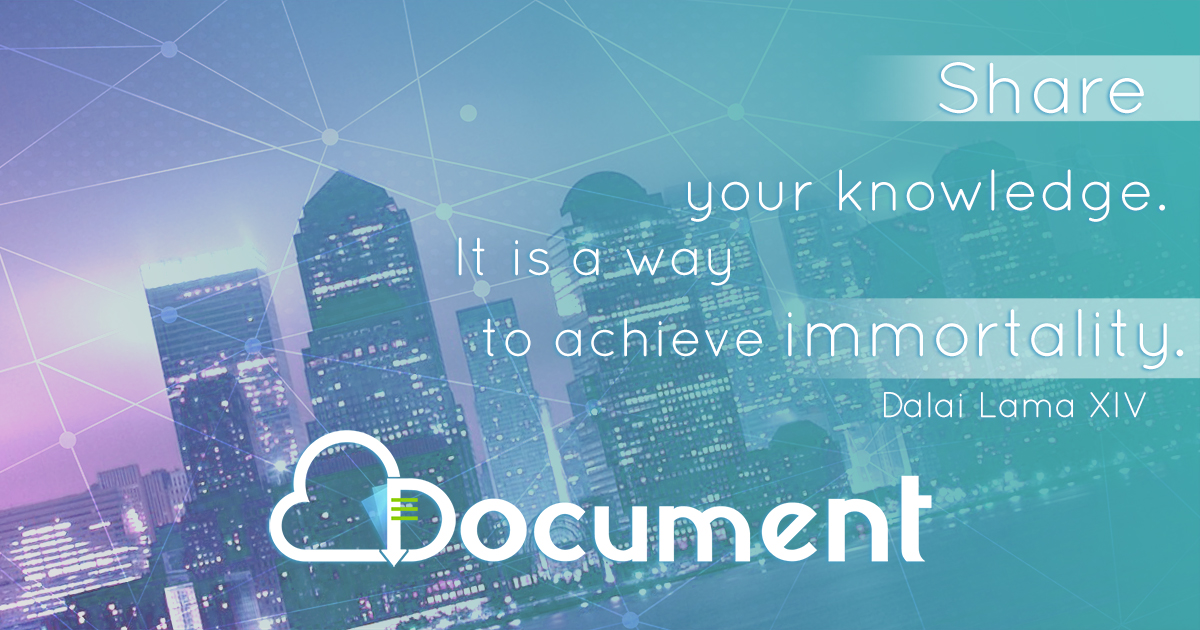
![Water extract of onion catalyzed Knoevenagel condensation … · 2020-07-09 · sulfide [90‒91]. The prepared onion extract is an acidic in nature, having the pH of 3.6 with the](https://static.fdocument.org/doc/165x107/5f526970287f455ed64239a9/water-extract-of-onion-catalyzed-knoevenagel-condensation-2020-07-09-sulfide-90a91.jpg)
